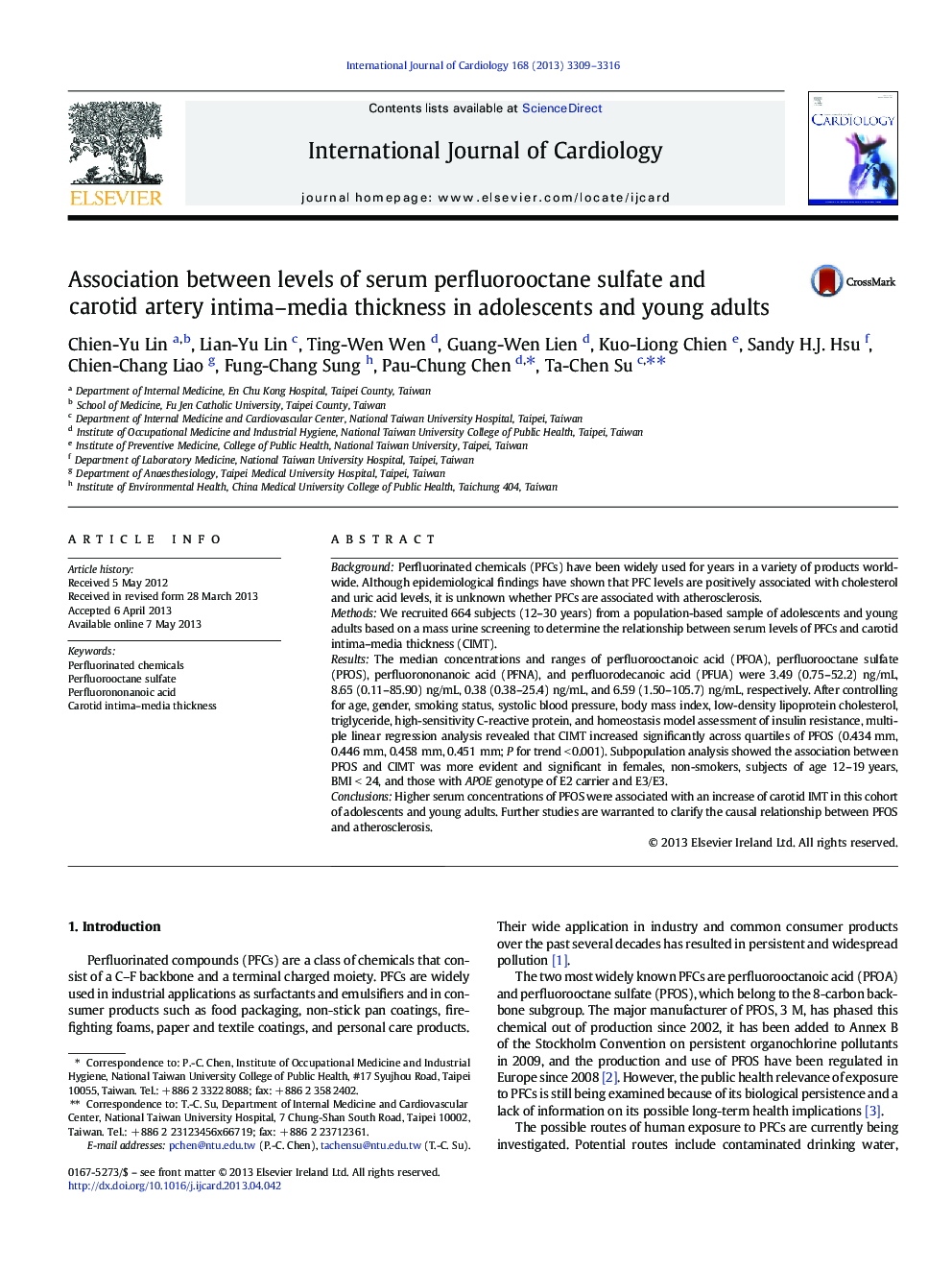| Article ID | Journal | Published Year | Pages | File Type |
|---|---|---|---|---|
| 5973614 | International Journal of Cardiology | 2013 | 8 Pages |
BackgroundPerfluorinated chemicals (PFCs) have been widely used for years in a variety of products worldwide. Although epidemiological findings have shown that PFC levels are positively associated with cholesterol and uric acid levels, it is unknown whether PFCs are associated with atherosclerosis.MethodsWe recruited 664 subjects (12-30Â years) from a population-based sample of adolescents and young adults based on a mass urine screening to determine the relationship between serum levels of PFCs and carotid intima-media thickness (CIMT).ResultsThe median concentrations and ranges of perfluorooctanoic acid (PFOA), perfluorooctane sulfate (PFOS), perfluorononanoic acid (PFNA), and perfluorodecanoic acid (PFUA) were 3.49 (0.75-52.2) ng/mL, 8.65 (0.11-85.90) ng/mL, 0.38 (0.38-25.4) ng/mL, and 6.59 (1.50-105.7) ng/mL, respectively. After controlling for age, gender, smoking status, systolic blood pressure, body mass index, low-density lipoprotein cholesterol, triglyceride, high-sensitivity C-reactive protein, and homeostasis model assessment of insulin resistance, multiple linear regression analysis revealed that CIMT increased significantly across quartiles of PFOS (0.434Â mm, 0.446Â mm, 0.458Â mm, 0.451Â mm; P for trend <Â 0.001). Subpopulation analysis showed the association between PFOS and CIMT was more evident and significant in females, non-smokers, subjects of age 12-19Â years, BMIÂ <Â 24, and those with APOE genotype of E2 carrier and E3/E3.ConclusionsHigher serum concentrations of PFOS were associated with an increase of carotid IMT in this cohort of adolescents and young adults. Further studies are warranted to clarify the causal relationship between PFOS and atherosclerosis.
